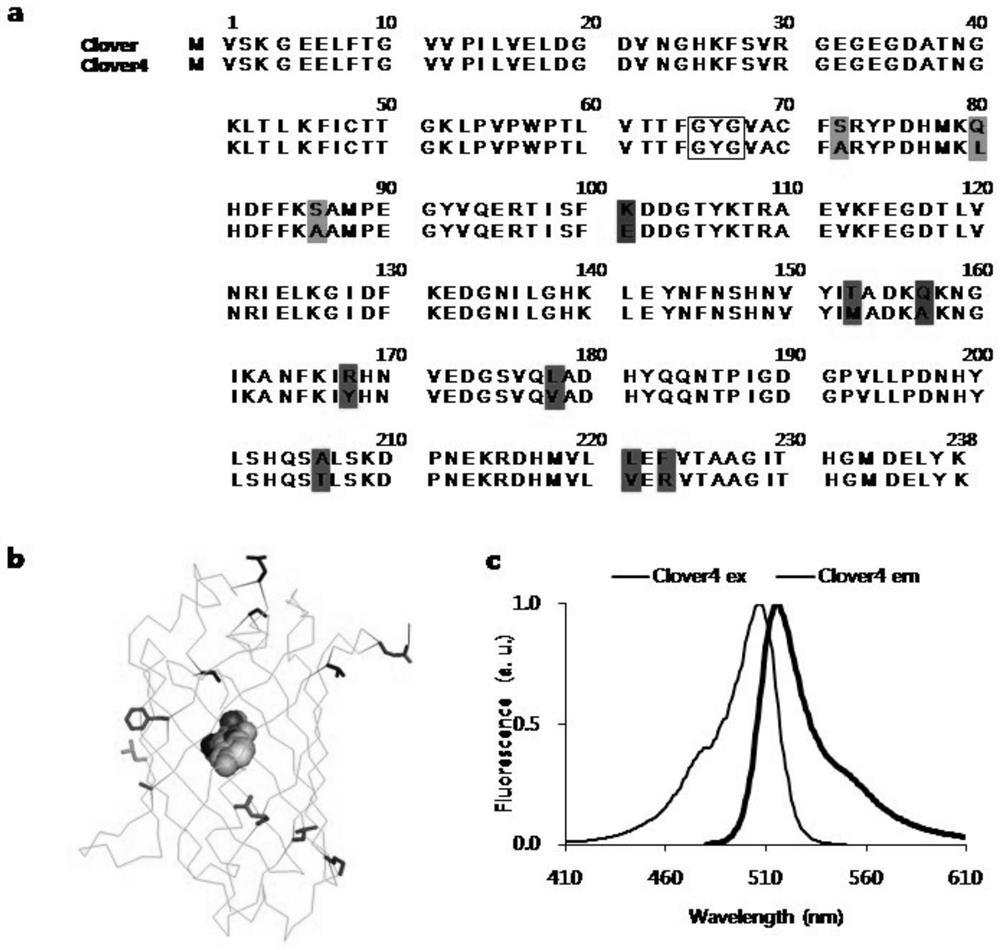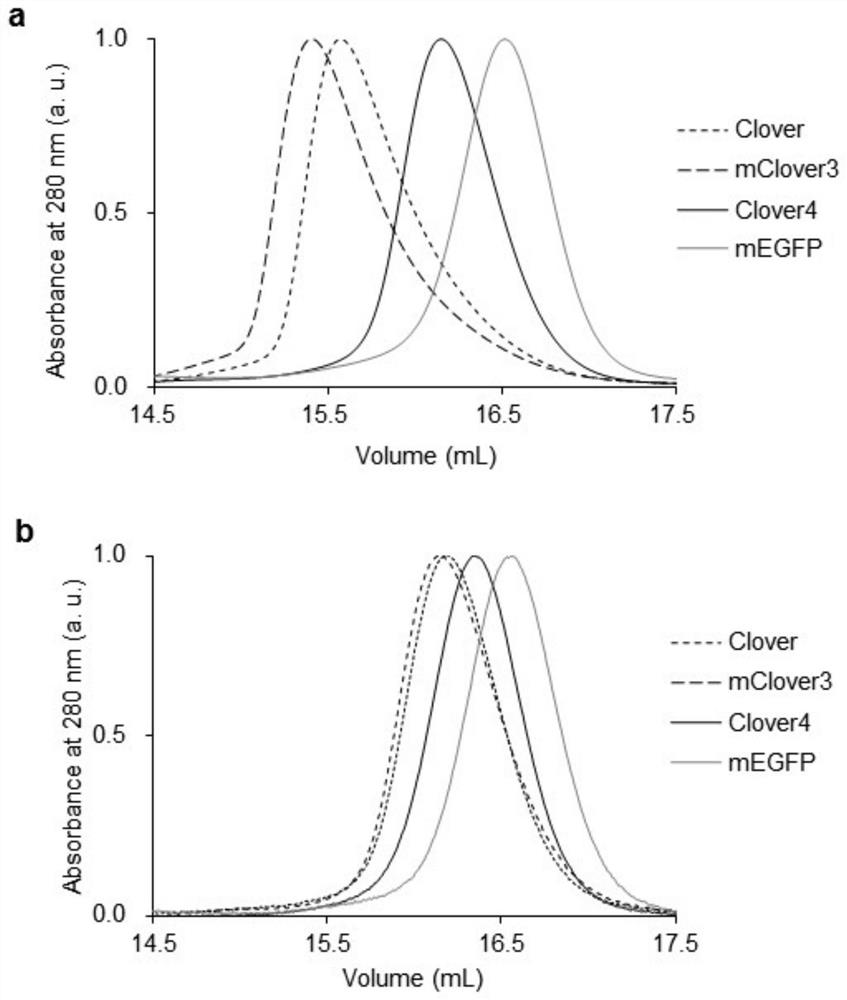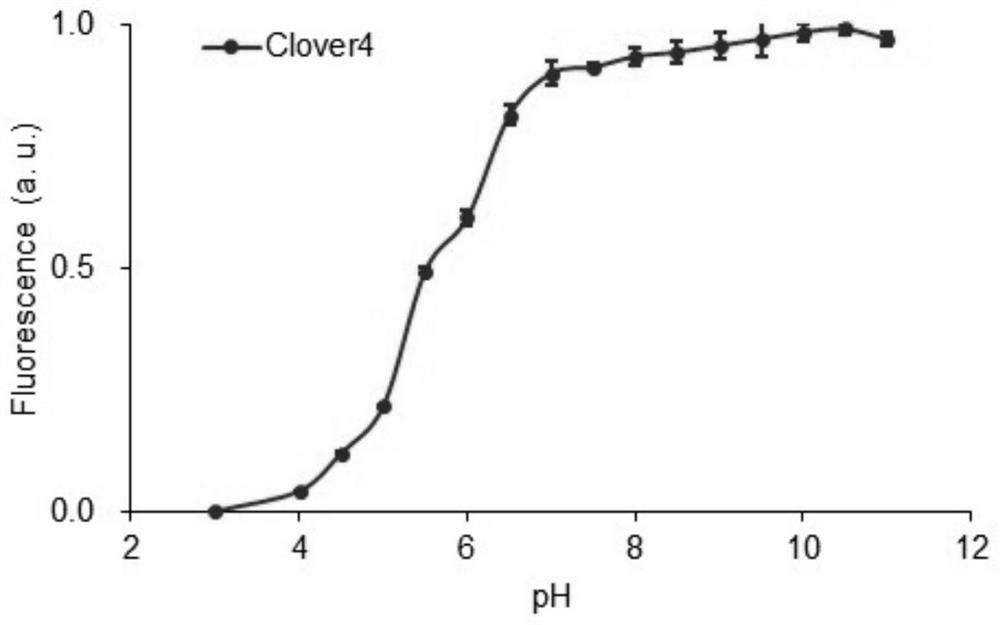Green fluorescent protein Clover4, probe derived from green fluorescent protein Clover4 and based on bioluminescence resonance energy transfer and application of green fluorescent protein Clover4
A green fluorescent protein and resonance energy transfer technology, applied in the field of BRET serum antibody detection system, can solve the problems of high brightness and high detection sensitivity, and achieve the effect of early diagnosis
- Summary
- Abstract
- Description
- Claims
- Application Information
AI Technical Summary
Problems solved by technology
Method used
Image
Examples
Embodiment 1
[0059] Example 1 Construction of green fluorescent protein Clover4 and detection of photophysical properties
[0060] (1) Analysis of the crystal structure of the green fluorescent protein Clover ( figure 1 b), and compared with the homologous sequence, rationally design and site-directed mutation the key sites that affect the spectrum of the fluorescent protein and the amino acids that interact with it, and then express and screen the mutants on the constitutive expression vector pNCS, used The expression strain is Stellar. In order to ensure the integrity of the library, 10 clones were set up for each mutant. Finally, the fluorescent properties of the mutant were detected by naked eye and blue LED excitation light through an orange acrylic filter, and a single clone expressing a fluorescent protein with a blue-shifted spectrum was screened out. clone. Subsequently, the non-conserved amino acid residues around the luminescent group of the mutant fluorescent protein with a b...
Embodiment 2
[0068] Example 2 Application of Clover4 in BRET and serum antibody detection Clover4-LUMABS system (mNeonGreen is abbreviated as mNeonG in the probe)
[0069] (1) Clover4-LUMABS-HIV probe
[0070] Firstly, mNenG-LUMABS-HIV and Clover4-LUMABS-HIV probes were respectively constructed, and the schematic diagrams of the probe structures are shown in Figure 4 As shown, mNenG-LUMABS-HIV is a probe that connects luciferase (Nluc) and mNeonGreen through a sequence containing an HIV epitope, and the probe also includes a SH3 / sp1 domain, while Clover4-LUMABS-HIV is a probe that contains The sequence of the HIV epitope is connected to the probe of luciferase (Nluc) and Clover4, and the probe also includes the SH3 / sp1 domain. See Table 2 for antigenic epitopes.
[0071] Tested in fetal calf serum (FBS), the test results are shown in Table 3. The experimental results show that the BRET efficiency (hiBRET) of the Clover4-LUMABS-HIV probe is 4.6 times that of mNenG-LUMABS-HIV in the absen...
PUM
 Login to View More
Login to View More Abstract
Description
Claims
Application Information
 Login to View More
Login to View More - Generate Ideas
- Intellectual Property
- Life Sciences
- Materials
- Tech Scout
- Unparalleled Data Quality
- Higher Quality Content
- 60% Fewer Hallucinations
Browse by: Latest US Patents, China's latest patents, Technical Efficacy Thesaurus, Application Domain, Technology Topic, Popular Technical Reports.
© 2025 PatSnap. All rights reserved.Legal|Privacy policy|Modern Slavery Act Transparency Statement|Sitemap|About US| Contact US: help@patsnap.com



